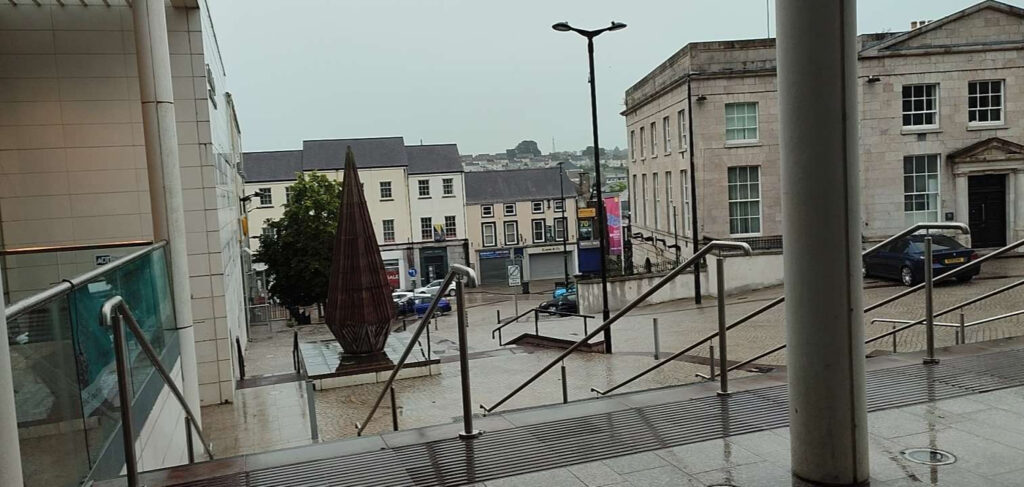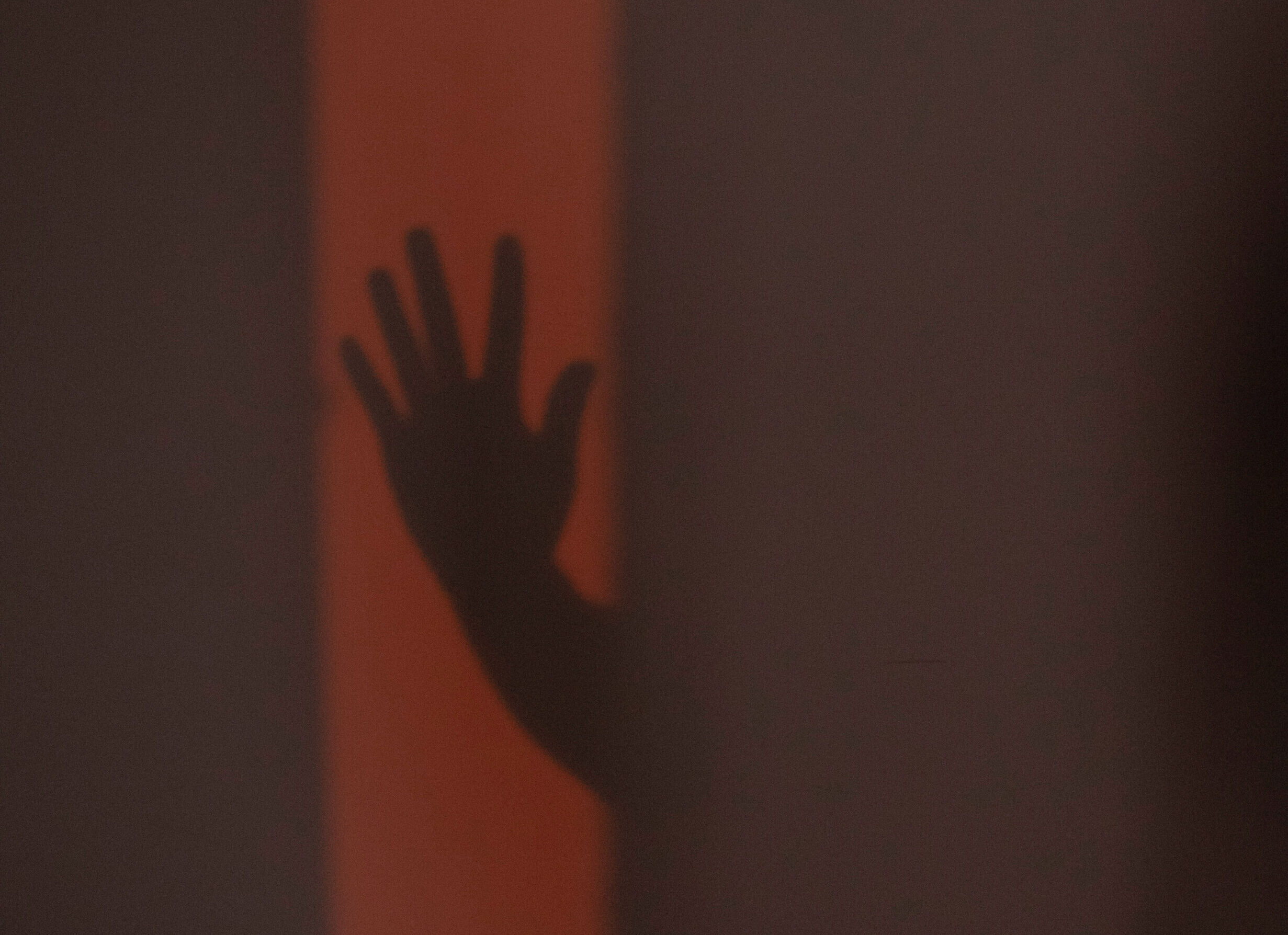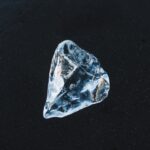by Molly McGill, performance at Market Place Theatre, Armagh
The trip from my home (in the middle of nowhere) to Armagh, (the middle of somewhere else) started with a forty-minute bus trip to Belfast in my work clothes. Another hour-long bus later, I made it into the heart of Armagh and met with Jay, a friend and fellow editor, at a pub to catch up.
I had over an hour before the show, so Jay and I stopped for dinner and a pint at a nearby restaurant (Uluru Bar and Grill) before making the short walk up to the theatre.
To those who have never had the pleasure, the Market Place Theatre is a sleek and modern building with a warm and cozy atmosphere. The staff are endlessly friendly, and the bottom floor is full to the brim with armchairs where you can wait for your show to begin with a drink from the bar. We got settled there on the plush chairs to wait for the announcement to venture into the theatre.

We ventured into the smallest of the theatre rooms, holding less than fifty people, and sat in the second row to get an unhindered view. However, the layout of the room allowed every patron perfect visibility of the projection of Nosferatu The Vampire so we need not have worried. Chris Green was off to the left-hand side of the screen, setting up his instruments and giving a friendly smile and nod to his audience as they filed in and found their seats.
Nosferatu The Vampire is a silent German film by F. W. Murnau that came out in 1922. Many attribute it to the popularity of the vampire in modern media due to the sensation it created upon release. This was the first film adaptation of Bram Stoker’s Dracula. Unfortunately, it was made without the permission of Stoker’s estate and therefore many copies of the film were destroyed. It is significant that the film kept its notoriety despite the controversy of its creation and the attempt to conceal its existence. Even the copy of the film used for Green’s performance held the scars of the scandal. The film was pieced together from multiple reels, parts of the film were carefully preserved and had the blue tint of near-perfect condition. However, some scenes were yellowed with sun damage.
This did not reduce the impact of the film however. At the time of Nosferatu’s creation and debut, Weimar Germany did not have the money to spare for lavish film sets and filmmakers had nothing to lose, therefore they were free to become experimental in their film style. Elements of Post World War 1 German expressionism are prominent in the deep shadows and hulking walls of Count Olaf’s castle, less an actual structure but more a manifestation of the character’s psyche, feeding the ominous atmosphere in a way that was so iconic and chilling, it is rarely perfectly replicated today. German expressionism and, by proxy, Nosferatu have impacted the horror genre at large. Look no further than the likes of Tim Burton’s filmography to see the familiar set design and a macabre cast of ghoulish characters. Clearly, modern works have sought to capture the magic; but instead of trying to cobble together something entirely unique, Chris Green finds a way to enhance what is already there with a modern twist.
The film was projected in its entirety with Green’s soundtrack amplifying the emotions on screen. Some of the soundtrack was pre-recorded, electronic, presumably to allow a more layered and complex sound but Green also utilized many instruments live.
Initially commissioned by English Heritage, Green suggested they do a screening at Whitby Abbey and then, to celebrate the 100th Anniversary of the film, the performance went on the road.
The opening scenes of the couple are accompanied by a jaunty and lighthearted tune played on baroque guitar. Later when the couple is separated, the baroque guitar theme repeats with a subtle mournful undercurrent in the prerecorded part of the soundtrack. This created a nice consistency in the soundtrack while still enabling the music to portray the complex emotions of the lovers; The husband’s excitement for his great adventure, and the wife’s bereavement at her husband’s departure. Green also utilizes other period-appropriate acoustic instruments such as the mandocello, that blended so seamlessly with Nosferatu that it is hard to believe that it was not always there.
Green did not only rely on acoustic instruments. He also employed both the keyboard, the piano accordion and, mostly discernibly, the electronic synth. The synth was liberally utilized by Green in scenes featuring Count Orlok and effectively sent a shiver down the spine. In some areas, it could be argued that the synth was too prevalent but that could also be my own personal preference and ultimately, a haunting impression was left by Count Orlok nonetheless.
I was certainly fascinated by the blend of period-appropriate musical instruments with modern electric music. We as the audience heard the origin of the film, and were immersed in the time period and then brought back to our own modern day with a synth melody reminiscent of the iconic Halloween theme for our villain, Count Orlok.
After the final triumphant notes of the soundtrack played, and we were brought back to reality, Green got a well-deserved, standing round of applause from his audience.
I had the opportunity to ask Chris Green some questions in the foyer of The Market Place Theatre. I found out the names of the instruments he used and how they were appropriate to the time of the film, only demonstrating how much thought went into the performance. After further digging, I found that much of the soundtrack was composed over lock-down. If anything conveys Green’s dedication, that certainly does.
Chris Green is still performing Nosferatu in venues all over Ireland as well as another soundtrack accompaniment to The Cabinet of Doctor Caligari around the United Kingdom. Check out his website for more details!
Molly McGill is a writer from County Derry, Ireland. She has a bachelor’s degree in film studies and creative writing from John Moore’s University and has a passion for writing and reading weird horror fiction.



Add your first comment to this post